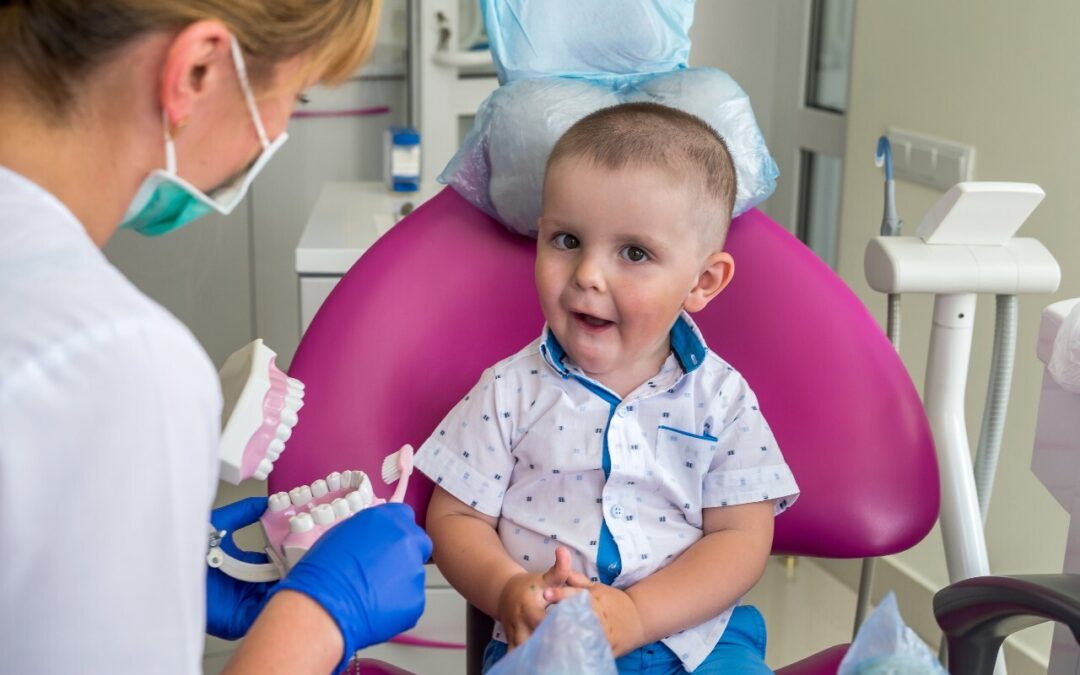“They’re just going to fall out eventually, so why do we need to treat or restore the baby teeth?” This question comes up more often than you might think, and in a way, it has logic to it. After all, we don’t fix broken or chipped fingernails, we let them fall off or clip them the rest of the way off. So why is it different when we talk about baby teeth?
Here’s a handful of reasons for you to understand why not only the routine daily dental care of your kids’ baby teeth is important but the value of filling cavities in baby teeth as opposed to leaving them alone or simply extracting the tooth.
1. Chewing Skills and Speech
Baby teeth serve to help the development of eating habits, and speech patterns. Consider that the front teeth primarily function to bite off foods, but the grinding process occurs with the molars. We prefer to extract teeth only in certain circumstances: when the tooth is so severely decayed that proper restoration is not possible, or if a primary tooth is preventing a permanent tooth from erupting.
Speech is the outcome of a blend of tongue, teeth, and lips working together as they control sound and airflow coming out of your mouth. Not every single sound requires the tongue to strike the teeth, but the majority do. Just for fun try saying the following sentence without allowing your tongue to touch your teeth or lips:
“Thank you for this delicious meal.” Doesn’t come out sounding correct at all, does it?
2. Keep the Space
Moreover, they are excellent placeholders. The formation of their bite and the drawn-out eruption of the permanent teeth is a delicate balance maintained by the primary teeth which generally have all erupted between the ages of three and four years old. Typically, healthy primary teeth won’t begin to fall out until your child is six to seven years old. Permanent teeth start erupting around the same time, but the eruption timeline for them stretches out until their late teens. Some wisdom teeth erupt even as late as 21 years of age. When a primary tooth is extracted, the rest of the teeth in the jaw can drift a bit, consequently crowding can be an issue later on.
3. Pain and Infection
Untreated cavities in primary teeth can spread, worsen, and lead to severe decay which in turn can be quite painful and negatively impact their quality of life. Abscesses, infections, dental sepsis are all painful complications that can develop and require serious interventions. While less painful perhaps, the untreated cavities in baby teeth can be visible and depending on their age impact their confidence and raise unnecessary insecurities.
4. Hypodontia / Oligodontia / Anodontia
This reason is often surprising to people, but it actually affects a markedly large percentage of the population. Moreover, it addresses the original question pretty precisely. Hypodontia is when one to six permanent tooth or teeth fail/s to even form. This means the baby tooth that erupts will never get a replacement and therefore its importance jumps to the front of the line, immediately. Taking care of the baby teeth should be important anyway, but if that baby tooth is the only one they will have in that position for the rest of their life? That certainly puts a new perspective on it, doesn’t it?
Oligodontia is when more than six permanent teeth fail to form and occurs significantly less often than hypodontia, while anodontia is a total absence of permanent teeth and is even rarer. The most common permanent teeth to be missing in a case of hypodontia are actually the wisdom teeth which often are extracted anyway so people don’t get concerned about a missing one or two. Next in line are the premolars that are located on the sides between the canines and the molars, followed by the upper lateral incisors, and then the lower central incisors.
An estimated 20% of adults have hypodontia, and while it’s been linked to genetics, research suggests environmental factors may influence its occurrence as well. The condition presents more often in women, with identical twins displaying a higher than average rate as well.
If you’re a parent reading this who has a baby tooth that was never replaced by a permanent tooth, then it is possible this trait could present in your child(ren) but should not be an automatic conclusion. Tell your child’s pediatric dentist if hypodontia applies to you, so they can be aware to look for it. If your child currently has a gap due to a lost baby tooth and the permanent tooth has yet to erupt, no need to panic. This does not automatically mean there is no permanent tooth, it is more than likely only a delayed eruption of the permanent tooth.
Restorations for Baby Teeth
If we discover a cavity in a baby tooth, we’ll discuss with you the options available for restoration so you can make an informed decision. Generally, we recommend resin composite fillings because they match the color of the teeth, and dry quickly allowing for a shorter period of time in the dentist chair.
Dental Checkups Matter
Even if your kids don’t have complaints, it’s important that they have routine dental office checkups. Some insurances only cover visits once a year, but we normally recommend bi-annual visits (every six months). When was the last time your kids came in to see us? We have four offices spread over the Bountiful area, all conveniently located and designed to put your child at ease. We’re here for you, so give us a call and put us to work!!


Recent Comments